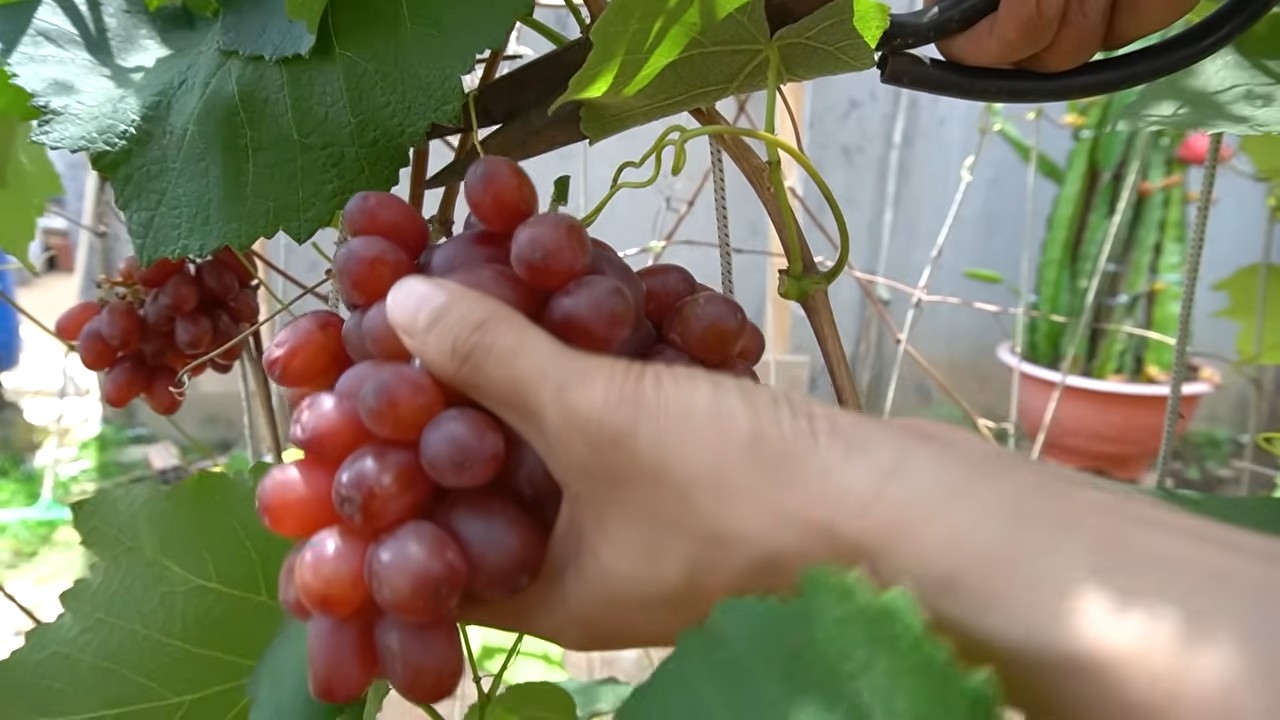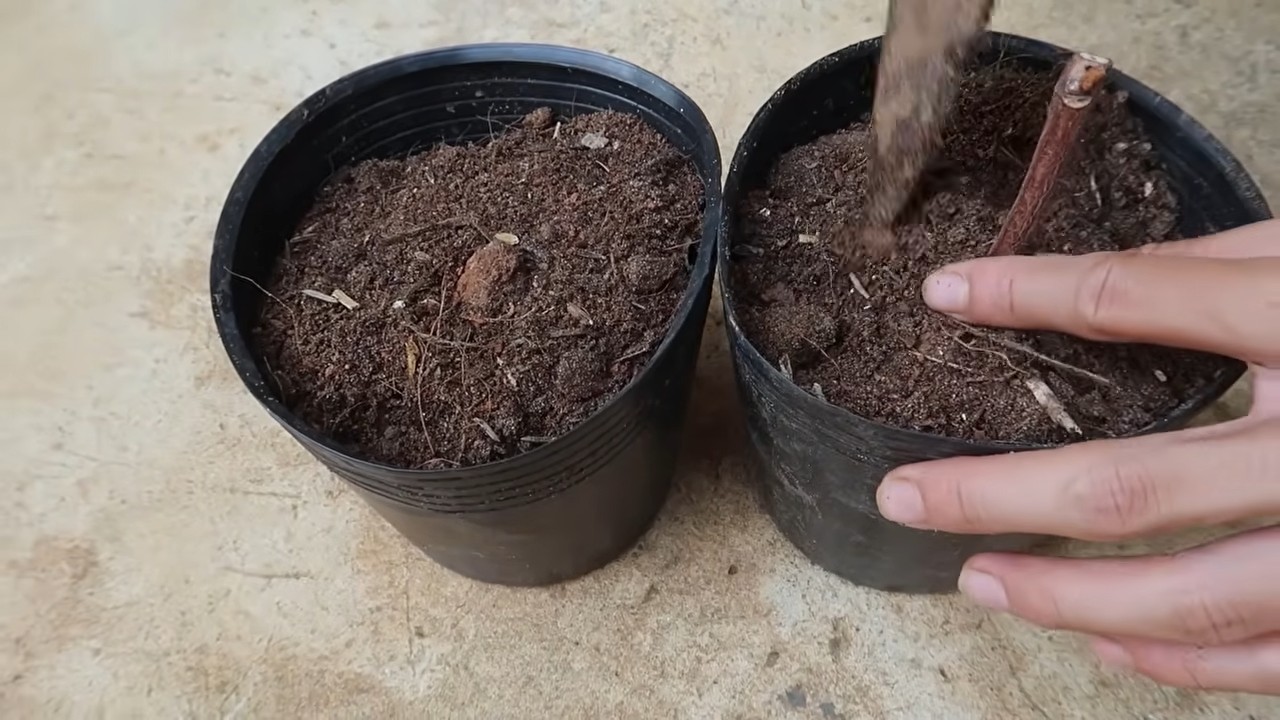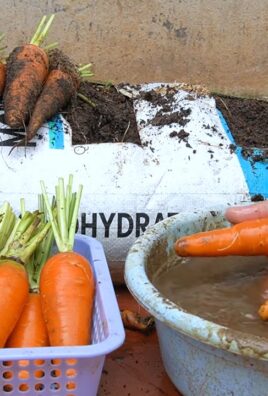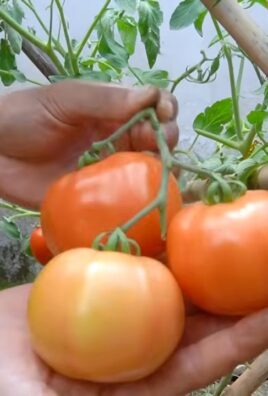Growing Grapes Indoors might seem like a far-fetched dream reserved for sprawling vineyards, but I’m here to tell you it’s absolutely achievable, even in the smallest of apartments! Forget battling unpredictable weather and pesky pests outdoors; imagine plucking juicy, sun-ripened grapes right from your own indoor vine.
For centuries, grapes have held a special place in human history, symbolizing abundance, celebration, and even divine connection. From ancient Roman feasts to modern-day wine cellars, the grape’s allure is undeniable. While traditionally cultivated in vast outdoor vineyards, the desire to bring this symbol of prosperity closer to home has led to innovative techniques like indoor cultivation.
Why should you consider growing grapes indoors? Well, for starters, it offers unparalleled control over the growing environment. You can regulate temperature, humidity, and light, ensuring optimal conditions for your vine to thrive. Plus, it’s a fantastic way to add a touch of natural beauty and a unique conversation starter to your living space. Beyond aesthetics, having fresh grapes readily available for snacking, juicing, or even homemade wine is a truly rewarding experience. So, ditch the store-bought grapes and embark on this exciting DIY adventure with me! I’m going to share some simple yet effective tricks and hacks that will transform your home into a miniature vineyard, one delicious grape at a time.

Growing Grapes Indoors: A Comprehensive DIY Guide
Hey there, fellow plant enthusiasts! Ever dreamt of having your own little vineyard, but lack the outdoor space? Well, dream no more! Growing grapes indoors is totally achievable, and I’m here to guide you through the entire process. It might seem daunting, but trust me, with a little patience and the right know-how, you’ll be enjoying homegrown grapes in no time.
Choosing the Right Grape Variety
First things first, not all grape varieties are created equal when it comes to indoor growing. We need to pick varieties that are well-suited to container life and can thrive in a controlled environment.
* Consider Seedless Varieties: Seedless grapes are generally easier to manage and more enjoyable to eat straight from the vine.
* Opt for Compact Varieties: Look for grape varieties that are naturally smaller and less vigorous. This will make pruning and training much easier.
* Disease Resistance is Key: Choose varieties known for their resistance to common grape diseases like powdery mildew.
Some excellent choices for indoor grape growing include:
* ‘Himrod’ Seedless: A popular white seedless grape known for its sweetness and early ripening.
* ‘Reliance’ Seedless: A hardy red seedless grape that’s very cold-tolerant and disease-resistant.
* ‘Vanessa’ Seedless: Another red seedless option with good flavor and disease resistance.
* ‘Jupiter’ Seedless: A blue-black seedless grape with a unique spicy flavor.
Gathering Your Supplies
Okay, now that we’ve chosen our grape variety, let’s gather everything we need to get started. Here’s a checklist:
* Large Container: You’ll need a pot that’s at least 15-20 gallons in size. Remember, grapevines have extensive root systems! Make sure it has drainage holes.
* Well-Draining Potting Mix: Use a high-quality potting mix specifically formulated for containers. Avoid using garden soil, as it can become compacted and doesn’t drain well.
* Trellis or Support System: Grapevines need something to climb on. A trellis, sturdy stakes, or even a tomato cage will work.
* Grow Lights (Optional but Recommended): If you don’t have a sunny south-facing window, grow lights are essential for providing adequate light.
* Pruning Shears: Sharp pruning shears are a must for maintaining your grapevine.
* Fertilizer: A balanced fertilizer specifically formulated for fruit-bearing plants.
* Watering Can or Hose: For watering your grapevine.
* pH Meter (Optional): To monitor the pH of your soil. Grapes prefer a slightly acidic soil (pH 6.0-7.0).
Planting Your Grapevine
Alright, let’s get our hands dirty! Here’s how to plant your grapevine:
1. Prepare the Container: Fill the container with your well-draining potting mix, leaving a few inches of space at the top.
2. Remove the Grapevine from its Nursery Pot: Gently loosen the roots of the grapevine before planting. If the roots are circling the pot, gently tease them apart.
3. Plant the Grapevine: Place the grapevine in the center of the container, making sure the top of the root ball is level with the soil surface.
4. Backfill with Potting Mix: Fill in the remaining space around the grapevine with potting mix, gently firming the soil.
5. Water Thoroughly: Water the grapevine thoroughly until water drains out of the drainage holes.
6. Install the Trellis: Position your trellis or support system in the container, making sure it’s sturdy and can support the weight of the grapevine.
Providing the Right Environment
Creating the right environment is crucial for the success of your indoor grapevine.
* Light: Grapevines need at least 6-8 hours of direct sunlight per day. If you don’t have enough natural light, supplement with grow lights. Position the grow lights about 12-18 inches above the grapevine.
* Temperature: Grapevines prefer temperatures between 65-80°F (18-27°C) during the growing season. In the winter, they need a period of dormancy with temperatures between 30-50°F (-1-10°C).
* Humidity: Grapevines prefer moderate humidity levels (around 40-60%). If your indoor air is too dry, you can increase humidity by using a humidifier or placing a tray of water near the grapevine.
* Air Circulation: Good air circulation is important to prevent fungal diseases. Make sure your grapevine is not overcrowded and that there’s adequate airflow around it.
Watering and Fertilizing
Proper watering and fertilizing are essential for healthy growth and fruit production.
* Watering: Water your grapevine regularly, allowing the soil to dry out slightly between waterings. Avoid overwatering, as this can lead to root rot. Check the soil moisture by sticking your finger into the soil. If the top inch is dry, it’s time to water.
* Fertilizing: Fertilize your grapevine regularly during the growing season (spring and summer) with a balanced fertilizer specifically formulated for fruit-bearing plants. Follow the instructions on the fertilizer label. Avoid fertilizing during the winter dormancy period.
Pruning and Training
Pruning and training are crucial for maintaining the shape and productivity of your indoor grapevine.
* Pruning: Pruning is essential for controlling the size and shape of your grapevine, as well as for promoting fruit production. Grapevines produce fruit on new growth, so pruning encourages new growth.
* Dormant Pruning: The best time to prune is during the dormant season (late winter or early spring) before new growth begins. Remove any dead, damaged, or diseased wood. Also, prune back the previous year’s growth to leave only a few buds on each cane.
* Summer Pruning: During the growing season, you can prune to remove suckers (shoots that grow from the base of the plant) and water sprouts (vigorous, non-fruiting shoots). You can also pinch back the tips of the shoots to encourage branching.
* Training: Training involves guiding the growth of the grapevine along the trellis or support system. As the grapevine grows, tie the shoots to the trellis using soft twine or plant ties. Train the grapevine to grow in a way that maximizes sunlight exposure and air circulation.
Dealing with Pests and Diseases
Even indoors, your grapevine can be susceptible to pests and diseases.
* Common Pests: Watch out for common pests like spider mites, aphids, and mealybugs. Inspect your grapevine regularly for signs of infestation. If you find pests, you can treat them with insecticidal soap or neem oil.
* Common Diseases: Grapevines are susceptible to fungal diseases like powdery mildew and downy mildew. To prevent these diseases, ensure good air circulation and avoid overwatering. If you see signs of disease, you can treat them with a fungicide.
Pollination
Most grape varieties are self-pollinating, meaning they don’t need another grapevine to produce fruit. However, indoor grapevines may benefit from hand-pollination to ensure good fruit set.
* Hand-Pollination: Use a small paintbrush to gently transfer pollen from one flower to another. Do this during the morning when the flowers are open and dry.
Harvesting Your Grapes
The moment we’ve all been waiting for! Harvesting your homegrown grapes is the ultimate reward.
* Ripening: Grapes are typically ready to harvest in late summer or early fall. The exact timing will depend on the variety and your growing conditions.
* Signs of Ripeness: Look for these signs that your grapes are ripe:
* The grapes will be plump and juicy.
* The grapes will have a rich color.
* The grapes will be easy to pull from the vine.
* The grapes will taste sweet and flavorful.
* Harvesting: Use pruning shears to carefully cut the grape clusters from the vine. Handle the grapes gently to avoid bruising them.
Enjoying Your Harvest
Congratulations! You’ve successfully grown grapes indoors! Now it’s time to enjoy the fruits of your labor.
* Eating Fresh: The simplest way to enjoy your grapes is to eat them fresh off the vine.
* Making Juice: You can also use your grapes to make juice.
* Making Jam or Jelly: If you have a large harvest, you can make jam or jelly.
* Freezing: You can freeze grapes for later use. Simply wash and dry the grapes, then spread them out on a baking sheet and freeze them. Once they’re frozen, you can transfer them to a freezer bag.
Troubleshooting
Even with the best care, you may encounter some challenges when growing grapes

Conclusion
So, there you have it! Growing grapes indoors might seem like a daunting task reserved for seasoned horticulturalists, but with the right approach and a little patience, you can absolutely cultivate your own miniature vineyard right in your home. This DIY trick isn’t just about having fresh grapes at your fingertips; it’s about the satisfaction of nurturing a plant from its humble beginnings to a fruit-bearing beauty. It’s about connecting with nature, even within the confines of your urban dwelling. It’s about adding a touch of rustic charm and a conversation starter to your living space.
Why is this a must-try? Because it’s empowering! You’re taking control of your food source, reducing your reliance on commercially grown produce, and potentially saving money in the long run. Plus, the grapes you grow yourself will undoubtedly taste better than anything you can buy at the store. There’s just something special about the flavor of homegrown fruit, a sweetness that comes from the love and care you’ve poured into it.
But the benefits extend beyond the tangible. Growing grapes indoors is a therapeutic activity. Tending to your vines, observing their growth, and anticipating the harvest can be incredibly relaxing and rewarding. It’s a chance to slow down, disconnect from the digital world, and reconnect with the natural rhythms of life.
Don’t be afraid to experiment with different grape varieties. While seedless varieties like Thompson Seedless are popular for eating, consider exploring other options like Concord grapes for making juice or jelly, or even wine grapes like Pinot Noir or Chardonnay if you’re feeling particularly ambitious. You can also play around with different training methods. Instead of a traditional trellis, try training your vines along a windowsill or even creating a living curtain.
Remember, success in growing grapes indoors hinges on providing the right conditions: ample sunlight, proper watering, well-draining soil, and adequate support for the vines. Don’t be discouraged if you encounter challenges along the way. Every gardener faces setbacks, and the key is to learn from your mistakes and keep trying.
We wholeheartedly encourage you to give this DIY project a try. Imagine the joy of plucking a perfectly ripe grape from your own indoor vine and savoring its sweet, juicy flavor. It’s an experience that’s both rewarding and delicious.
And once you’ve embarked on your indoor grape-growing adventure, we’d love to hear about your experiences! Share your tips, tricks, and triumphs in the comments below. Let’s create a community of indoor grape growers and learn from each other. What variety did you choose? What challenges did you face? What advice would you give to someone just starting out? Your insights could be invaluable to others. So, go ahead, get your hands dirty, and start growing your own grapes indoors today! You won’t regret it.
Frequently Asked Questions (FAQ)
What are the best grape varieties to grow indoors?
Choosing the right grape variety is crucial for indoor success. Seedless varieties like Thompson Seedless are popular due to their ease of eating. However, other good options include:
* **’Himrod’**: Another seedless white grape known for its sweetness and early ripening.
* **’Reliance’**: A seedless red grape that is cold-hardy and disease-resistant.
* **’Vanessa’**: A seedless red grape with a crisp texture and good flavor.
* **’Concord’**: While typically grown outdoors, Concord grapes can be grown indoors with proper care and pruning. They are ideal for juice and jelly.
* **Dwarf Varieties**: Look for dwarf or miniature grape varieties specifically bred for container growing. These are often available at specialty nurseries.
Consider the size of your growing space and the amount of sunlight available when selecting a variety. Also, research the specific needs of each variety to ensure you can provide the optimal growing conditions.
How much sunlight do indoor grapes need?
Grapes require a significant amount of sunlight to thrive and produce fruit. Aim for at least 6-8 hours of direct sunlight per day. A south-facing window is ideal. If you don’t have enough natural light, supplement with grow lights. Full-spectrum LED grow lights are a good option, as they provide the necessary wavelengths for photosynthesis. Position the grow lights close to the vines, but not so close that they burn the leaves. Monitor your plants closely and adjust the lighting as needed.
What type of soil is best for growing grapes in containers?
Well-draining soil is essential for preventing root rot. A good potting mix for grapes should be light, airy, and rich in organic matter. You can create your own mix by combining equal parts of:
* **Potting soil**: Provides a base for the mix.
* **Perlite**: Improves drainage and aeration.
* **Peat moss or coco coir**: Retains moisture and adds organic matter.
* **Compost**: Provides nutrients and improves soil structure.
Avoid using garden soil, as it can be too heavy and compact for container growing. Ensure that your container has drainage holes to allow excess water to escape.
How often should I water my indoor grape vines?
Watering frequency depends on several factors, including the size of the container, the type of soil, the temperature, and the humidity. Generally, you should water your grape vines when the top inch of soil feels dry to the touch. Water thoroughly until water drains out of the drainage holes. Avoid overwatering, as this can lead to root rot. During the growing season (spring and summer), you may need to water more frequently than during the dormant season (fall and winter). Monitor your plants closely and adjust your watering schedule as needed.
How do I prune indoor grape vines?
Pruning is essential for maintaining the shape and productivity of your grape vines. The best time to prune is during the dormant season (late winter or early spring). Remove any dead, damaged, or diseased wood. Also, prune back the previous year’s growth to encourage new growth and fruit production. There are different pruning methods for different grape varieties, so research the specific needs of your chosen variety. Generally, you want to prune to maintain a manageable size and shape for your indoor space.
Do I need to fertilize my indoor grape vines?
Yes, grape vines require regular fertilization to provide the nutrients they need to grow and produce fruit. Use a balanced fertilizer specifically formulated for fruit-bearing plants. Follow the instructions on the fertilizer label. Fertilize during the growing season (spring and summer). Avoid fertilizing during the dormant season. You can also supplement with organic fertilizers like compost tea or fish emulsion.
How do I pollinate my indoor grape vines?
Most grape varieties are self-pollinating, meaning they don’t require another plant for pollination. However, indoor grape vines may benefit from hand-pollination to ensure good fruit set. Use a small paintbrush to gently transfer pollen from one flower to another. You can also use a fan to circulate air around the plants, which can help with pollination.
How long does it take for indoor grape vines to produce fruit?
It typically takes 2-3 years for grape vines to start producing fruit. Be patient and continue to provide the necessary care. The first year or two, the plant will focus on establishing its root system and growing its foliage. Once the plant is mature enough, it will start to produce flowers and fruit.
What are some common pests and diseases that affect indoor grape vines?
Common pests that can affect indoor grape vines include spider mites, aphids, and mealybugs. Regularly inspect your plants for signs of infestation. If you find pests, treat them with insecticidal soap or neem oil. Common diseases that can affect indoor grape vines include powdery mildew and downy mildew. Ensure good air circulation and avoid overwatering to prevent these diseases. If you see signs of disease, treat them with a fungicide.
Can I grow grapes indoors from seed?
While it’s possible to grow grapes from seed, it’s not recommended. Grape seeds are often difficult to germinate, and the resulting plants may not be true to type. It’s best to start with a rooted cutting or a grafted plant from a reputable nursery. This will ensure that you get a healthy plant that will produce the desired fruit.




Leave a Comment